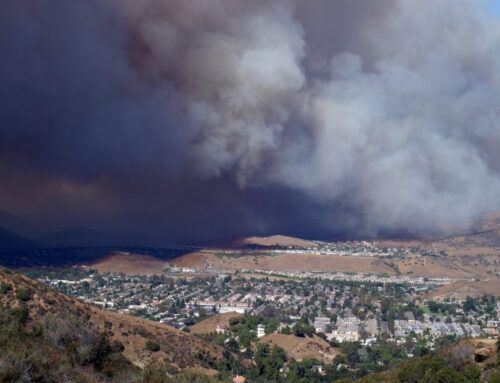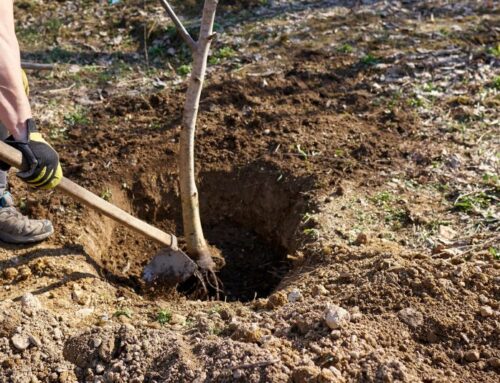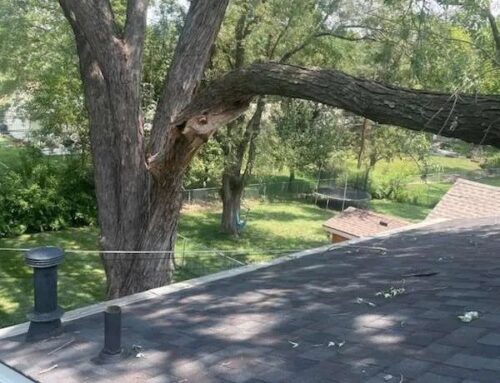Beautiful and resilient, pine trees are a popular choice for many landscapes and gardens. But like all trees, pines are susceptible to various tree pests and diseases. Learn about the most common pine tree diseases as well as tips on how to treat and prevent them!
Pine Tree Diseases
Pine tree diseases come in many forms, from fungal infections to parasitic infestations. Try to recognize the signs early on so that you can mitigate the damage and have higher treatment success. Here are top diseases to look for:
Needlecast Fungus
Needlecast fungus is a common disease that affects the needles of pine trees, causing them to turn brown and fall off prematurely. The most notable symptom is the appearance of small, black fruiting bodies on the needles. Over time, the disease can lead to significant needle loss, weakening the tree and making it more susceptible to other stress factors.
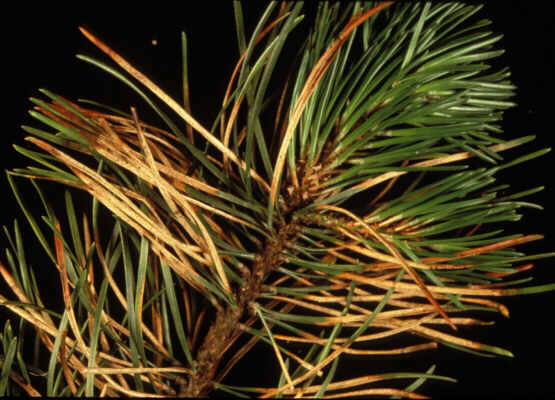
Causes: Needlecast fungus is caused by fungi, such as Rhizosphaera and Mycosphaerella. These fungi thrive in moist conditions and spread through spores carried by wind and rain.
Symptoms:
- Browning and premature needle drop
- Black fruiting bodies on needles
- Thin and sparse canopy
Management:
- Prune affected branches to improve air circulation
- Apply fungicides in early spring and summer
- Ensure proper spacing between trees to reduce humidity
Root Rot
Root rot is a serious disease that affects the root system of pine trees, often leading to tree death if not managed promptly. It is caused by various fungi, including Phytophthora and Armillaria, which thrive in poorly drained soils.
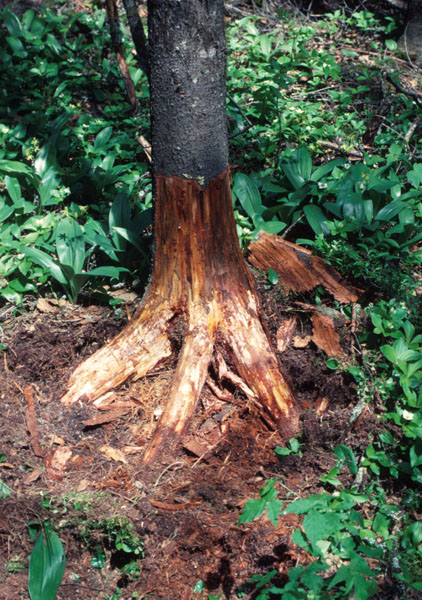
Causes: Overwatering, poor drainage, and compacted soil create conditions that favor root rot fungi.
Symptoms:
- Wilting and yellowing of needles
- Reduced growth and vigor
- Soft, mushy roots with a foul odor
Management:
- Improve soil drainage and avoid overwatering
- Remove and destroy infected trees and roots
- Apply fungicides to prevent the spread
Rust
Rust is a fungal disease that affects pine trees, causing orange or yellowish pustules on the needles, stems, and cones. Different types of rust affect pines, including white pine blister rust and fusiform rust.
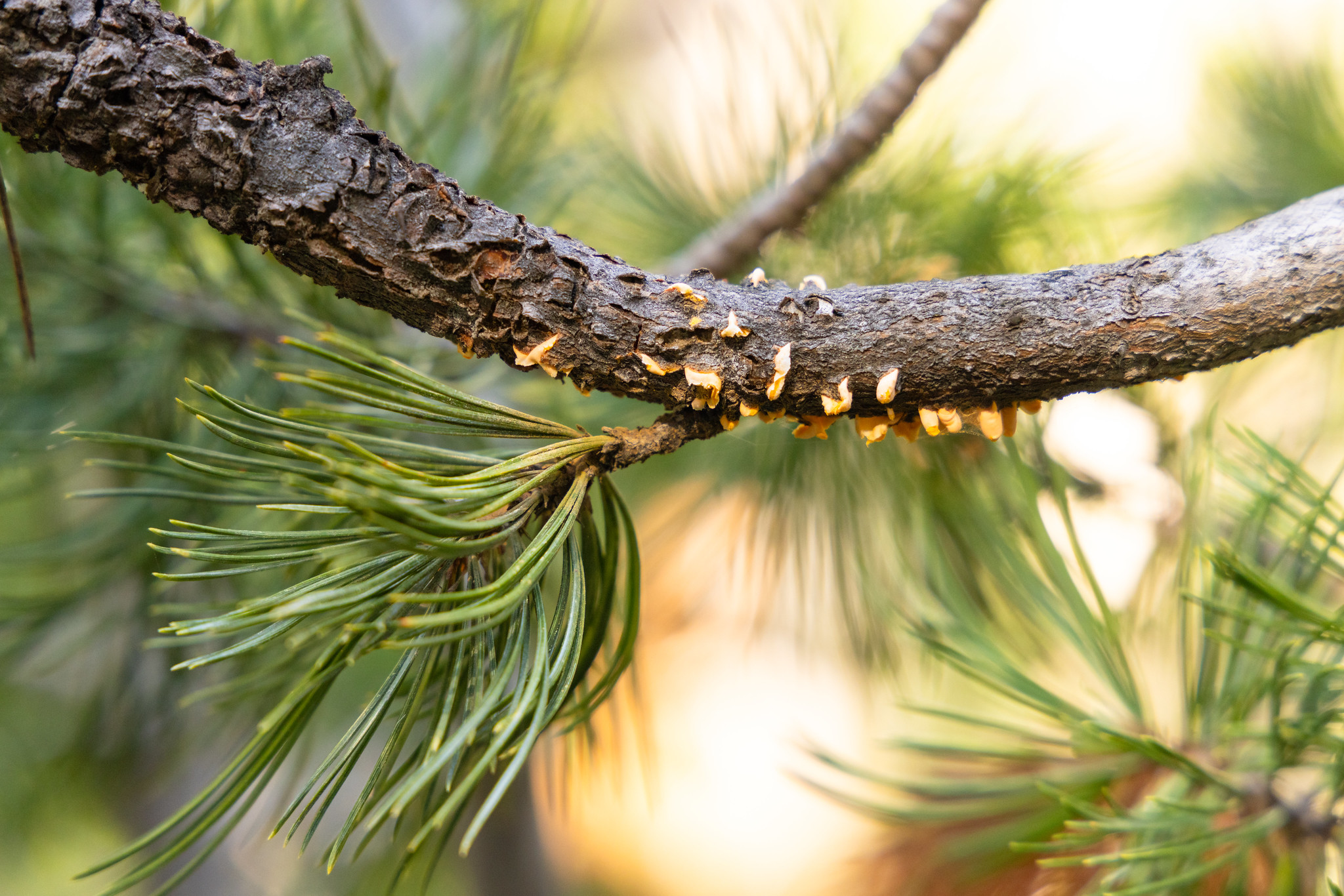
Causes: Rust fungi require alternate hosts to complete their life cycle. For example, white pine blister rust requires currant or gooseberry plants.
Symptoms:
- Orange or yellow pustules on needles and stems
- Swollen and deformed branches
- Premature needle drop
Management:
- Remove alternate host plants nearby
- Prune and destroy affected branches
- Apply fungicides during the early stages of infection
Diplodia (Sphaeropsis) Tip Blight
Diplodia tip blight, also known as Sphaeropsis tip blight, is a fungal disease that primarily affects mature pine trees, particularly Austrian and Scots pines. It causes the tips of branches to die back, leading to stunted growth and reduced aesthetic appeal.
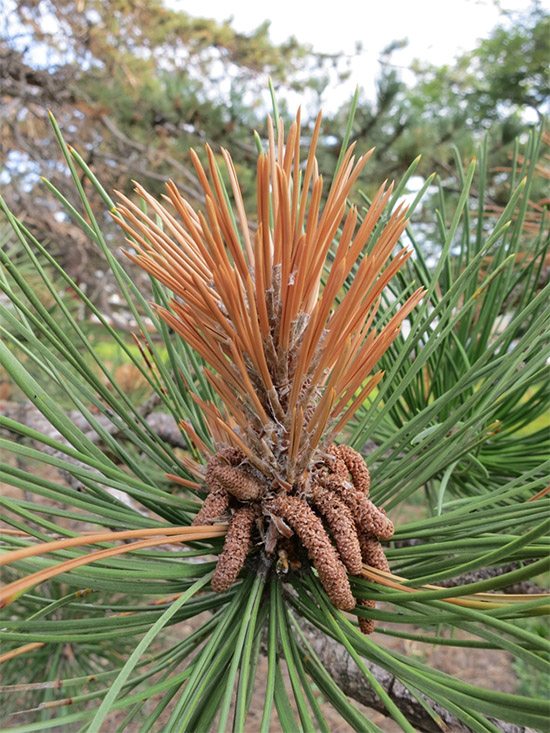
Causes: The disease is caused by the fungus Diplodia pinea, which infects trees through wounds or natural openings.
Symptoms:
- Browning and death of shoot tips
- Resin-soaked cones and needles
- Black fruiting bodies on affected tissues
Management:
- Prune and destroy infected branches
- Apply fungicides in spring and early summer
- Avoid wounding trees during pruning and maintenance
Pine Wilt
Pine wilt is a devastating disease caused by the pinewood nematode, Bursaphelenchus xylophilus. This microscopic worm infects the water-conducting tissues of the tree, leading to rapid decline and death.
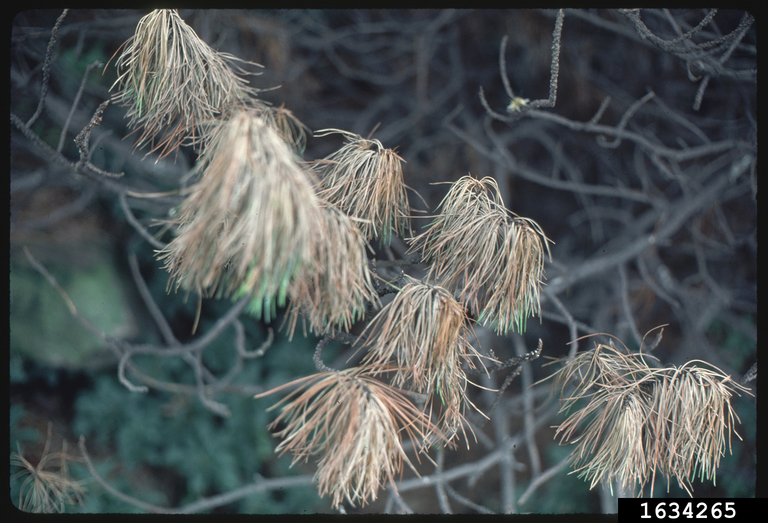
Causes: The pinewood nematode is spread by pine sawyer beetles, which introduce the nematode into trees through feeding wounds.
Symptoms:
- Rapid wilting and browning of needles
- Resin flow from affected areas
- Sudden tree death within weeks or months
Management:
- Remove and destroy infected trees to prevent spread
- Use nematicides to manage nematode populations
- Control pine sawyer beetles with insecticides
Pitch Canker
Pitch canker is a fungal disease caused by Fusarium circinatum, which affects the branches, trunks, and cones of pine trees. It causes cankers to form, leading to resin ooze (aka pitch, hence the disease name) and branch dieback.
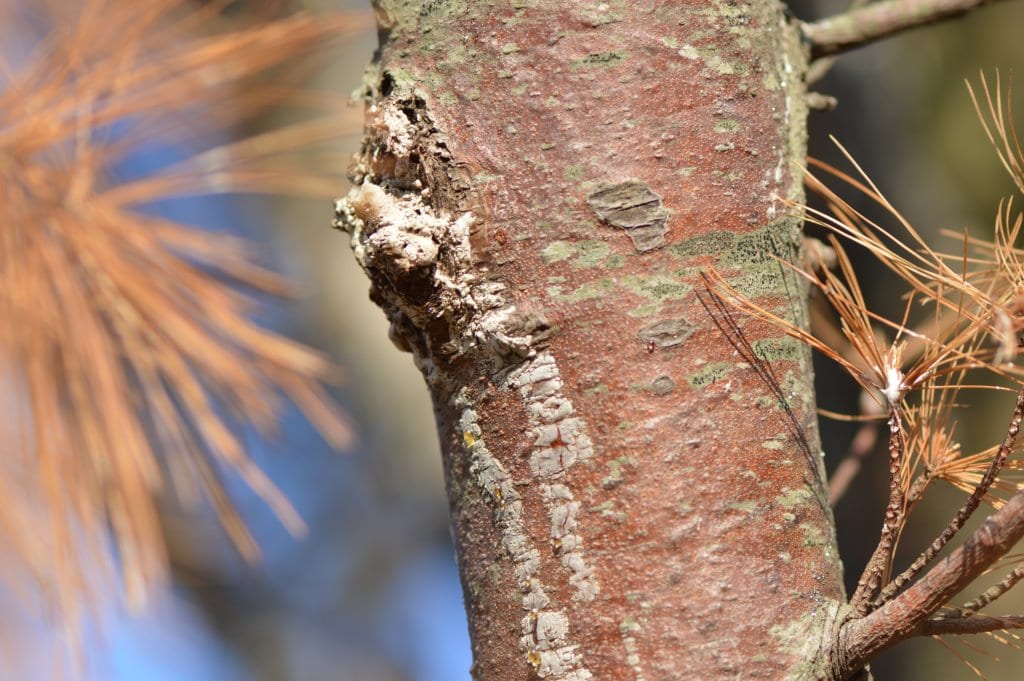
Causes: The fungus spreads through insect vectors, wind, and rain. It can also enter trees through wounds.
Symptoms:
- Resin-soaked cankers on branches and trunk
- Yellowing and browning of needles
- Branch dieback and tree decline
Management:
- Prune and destroy infected branches
- Apply fungicides to protect healthy trees
- Avoid wounding trees and control insect vectors
How to Treat Pine Tree Diseases
Treating pine tree diseases involves a combination of cultural practices, chemical treatments, and, in some cases, removal of infected trees. Here are some general steps to treat pine tree diseases:
- Diagnosis: Correctly identify the disease affecting your pine tree. Professional arborist consulting can help ensure an accurate diagnosis.
- Pruning: Remove and destroy infected branches to reduce the spread of the disease.
- Fungicides and Insecticides: Apply appropriate fungicides or insecticides. Follow the manufacturer’s instructions for proper application. Please note that some treatments require application by professional, licensed arborists and applicators.
- Use Tree Health Care: Enhance the overall health of the tree by providing adequate water, nutrients, and proper mulching. Healthy trees are more resilient to diseases.
- Soil Management: Ensure proper soil drainage and avoid overwatering. Amending the soil with organic matter can improve its structure and reduce disease susceptibility.
How to Prevent Them
Prevention is the most effective strategy for managing pine tree diseases. Implementing good cultural practices can significantly reduce the risk of infection.
- Proper Planting: Choose disease-resistant pine species and plant them in well-drained soil. Ensure proper spacing to promote good air circulation.
- Watering: Water pine trees deeply but infrequently, allowing the soil to dry out between waterings. Avoid overhead irrigation, which can promote fungal growth.
- Mulching: Apply a layer of mulch around the base of the tree to conserve moisture and regulate soil temperature. Keep mulch away from the trunk to prevent rot.
- Sanitation: Remove and destroy fallen needles, branches, and cones that may harbor disease-causing organisms.
- Monitoring: Regularly inspect pine trees for signs of disease and pests. Early detection can help prevent the spread of infections.
- Pruning: Prune trees during dry weather to minimize the risk of spreading diseases. Avoid wounding trees unnecessarily.
Look out for these pine disease symptoms and follow these tree care tips so you can enjoy your pine trees for many years to come! Questions or concerns about your pines? Don’t hesitate to contact us for professional tree care services!

